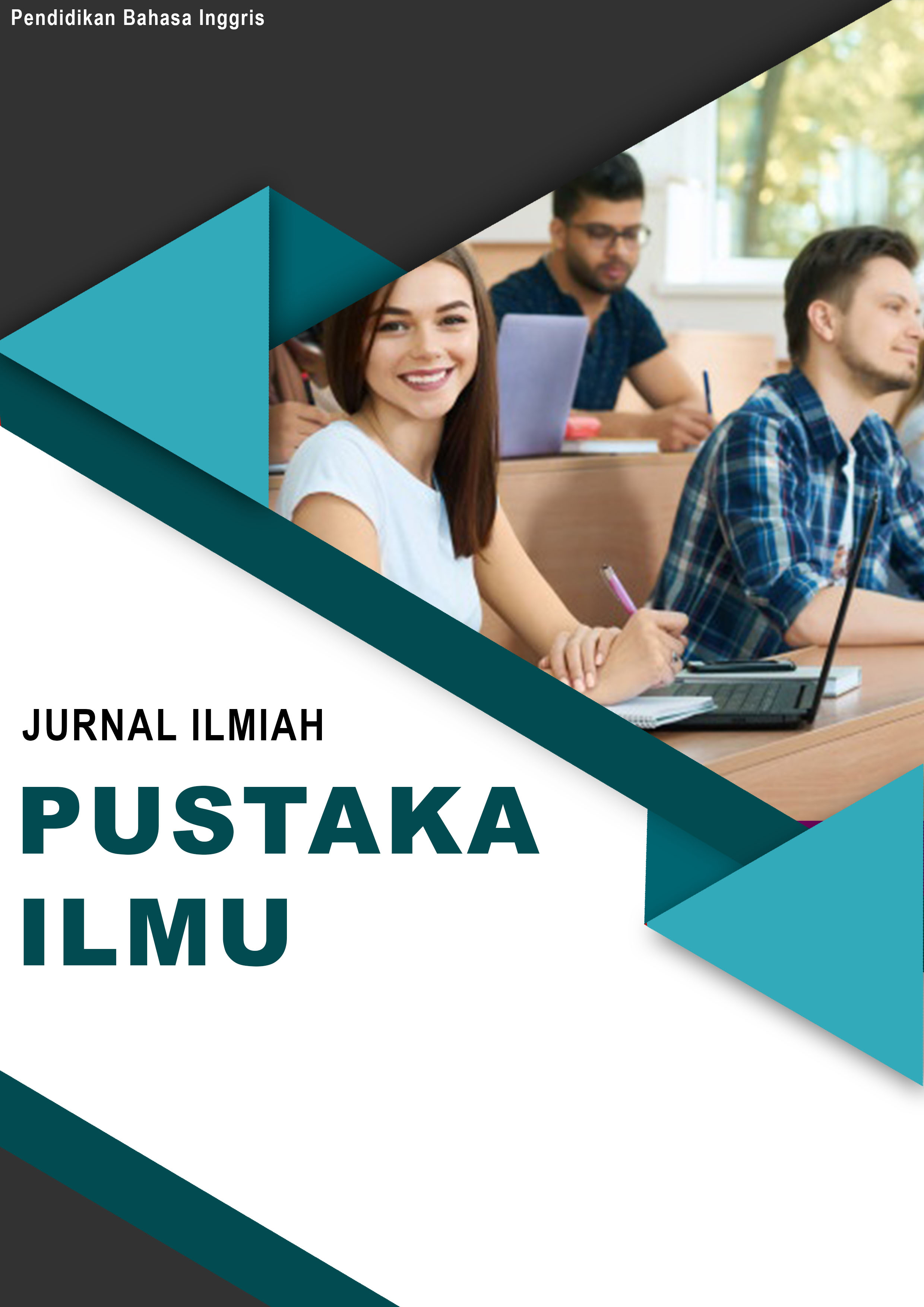THE ELEMENTS OF GOTHIC GENRE IN IRVING’S THE LEGEND OF SLEEPY HOLLOW
Kata Kunci:
Elements of Ghotic Genre, Genre Studies.Abstrak
In this research, the researchers discusses short stories by Irving’s, entitled The legend of Sleepy Hollow. It is aimed to identify elements of Ghotic Genre seen in Irving’s The Legend of Sleepy Hollow. This results focuses on the whole of the story and the elements of Ghotic genre inside the story. The data obtained trough exploring some dialogue, narrations, and events in the short stories are correlated with genre studies. The theory applied by the researchers in this research is the theory of genre studies. The results of this analysis present the analyzed data inside the short story. The analysis is also supported by extended significant explanation beside the data itself. As the result, the researchers found elements of gothic can be found in all the short story. And the elements of gothic can be seen from the setting, romance as addition elements of gothic in America, athmosphere, emotion, and supranatural
Referensi
Afrianto, A., & Inayati, A. (2016). Existential process in Harry Potter and the Chamber of Secret: A systemic functional linguistic study. Teknosastik, 14(1), 26–31.
Al Falaq, J. S., Suprayogi, S., Susanto, F. N., & Husna, A. U. (2021). Exploring The Potentials of Wattpad For Literature Class. Indonesian Journal of Learning Studies, 1(2), 12–19.
Amelia, D. (2016). Indonesian literature’s position in world literature. Teknosastik, 14(2), 1–5.
Amelia, D. (2021). Antigone’s Phallus Envy and Its Comparison to Indonesian Dramas’ Characters: A Freudian Perspective. Vivid: Journal of Language and Literature, 10(1), 23–30.
Aminatun, D., Ngadiso, N., & Marmanto, S. (2019). Applying PLEASE strategy to teach writing skill on students with different linguistic intelligence. Teknosastik, 16(1), 34–40.
Ayu, M. (2020). Evaluation Cultural Content on English Textbook Used by EFL Students in Indonesia. JET (Journal of English Teaching), 6(3), 183–192.
Damayanti, M. E., & Listyani, L. (2020). AN ANALYSIS OF STUDENTS’SPEAKING ANXIETY IN ACADEMIC SPEAKING CLASS. ELTR Journal, 4(2), 152–170.
Heri Kuswoyo, S. S., & Wahyudin, A. Y. (2017). Improving Student‟ s Listening Skill Using Task-Based Approach in EFL Classroom Setting.
Kaid, L. L. (2004). Political advertising. Lawrence Erlbaum Associates Publishers.
Kardiansyah, M. Y. (n.d.). Metaphysic Paradox upon Daemon Character as Delineated in Philip Pullman’s Northern Lights.
Kardiansyah, M. Y., & Salam, A. (2020a). Literary Translation Agents in the Space of Mediation: A Case Study on the Production of The Pilgrimage in the Land of Java.
Kardiansyah, M. Y., & Salam, A. (2020b). Literary Translation Agents in the Space of Mediation. International Joint Conference on Arts and Humanities (IJCAH 2020), 592–598.
Kardiansyah, M. Y., & Salam, A. (2020c). The Translator’s Strategy as a Cultural Mediator in Translating Indonesian Novel into English. 4th International Conference on Language, Literature, Culture, and Education (ICOLLITE 2020), 413–418.
Kuswoyo, H. (n.d.). Advances in Language and Literary Studies Declarative Sentence Pattern In" Laskar Pelangi" And" The Rainbow Troo...
Kuswoyo, H., & Audina, A. Y. (2020). Consecutive Interpreting Strategies on A Court Setting: A Study of English into Indonesia Interpretation. TEKNOSASTIK, 18(2), 90–102.
KUSWOYO, H., SUJATNA, E. V. A. T. S., & CITRARESMANA, E. (2013). Theme of imperative clause in political advertising slogan. Research Journal of English Language and Literature, 1(4), 162–168.
Kuswoyo, H., & Wahyudin, A. Y. (2017). Improving Student’s Listening Skill Using Task-Based Approach in EFL Classroom Setting. 4th Asia Pacific Education Conference (AECON 2017), 118–123.
Lathifah, L., Suaidah, S., Anam, M. K., & Suandi, F. (2021). PEMODELAN ENTERPRISE ARCHITECTURE MENGGUNAKAN TOGAF PADA UNIVERSITAS X PALEMBANG. Jurnal Teknoinfo, 15(1), 7–12.
Lennon, J. (2008). Irish Orientalism: a literary and intellectual history. Syracuse University Press.
Mahfud, I., & Gumantan, A. (2020). Survey Of Student Anxiety Levels During The Covid-19 Pandemic. Jp. Jok (Jurnal Pendidikan Jasmani, Olahraga Dan Kesehatan), 4(1), 86–97.
Mertania, Y., & Amelia, D. (2020). Black Skin White Mask: Hybrid Identity of the Main Character as Depicted in Tagore’s The Home and The World. Linguistics and Literature Journal, 1(1), 7–12.
Oktaviani, L., & Mandasari, B. (2020). Powtoon: A digital medium to optimize students’ cultural presentation in ELT classroom. Teknosastik, 18(1), 33–41.
Rido, A. (2015). The use of discourse markers as an interactive feature in science lecture discourse in L2 setting. Teflin Journal, 21(1), 90–106.
Rido, A., Kuswoyo, H., & Ayu, R. (2020). Interaction management strategies in English literature lectures in Indonesian university setting. Indonesian Journal of EFL and Linguistics, 5(2), 315–337.
Rido, A., Kuswoyo, H., Suryaningsih, A. S., Nuansa, S., Ayu, R., & Arivia, R. P. (2021). Repair Strategies in English Literature Lectures in a University in Indonesia. TEKNOSASTIK, 19(1), 14–23.
Saviour, I. I., Dirgantoro, K. P., Lee, J.-M., & Kim, D.-S. (2021). Blockchain side implementation of Pure Wallet (PW): An offline transaction architecture. ICT Express.
Suprayogi, S., & Novanti, E. A. (2021). EFL Learner’s Literary Competence Mapping through Reader-Response Writing Assessed using CCEA GCSE Mark Scheme. Celt: A Journal of Culture, English Language Teaching & Literature, 21(1), 1.
Suryono, R. R., Purwandari, B., & Budi, I. (2019). Peer to peer (P2P) lending problems and potential solutions: A systematic literature review. Procedia Computer Science, 161, 204–214.
Tanenhaus, M. K., Magnuson, J. S., Dahan, D., & Chambers, C. (2000). Eye movements and lexical access in spoken-language comprehension: Evaluating a linking hypothesis between fixations and linguistic processing. Journal of Psycholinguistic Research, 29(6), 557–580.
Wahyudin, A. Y. (2018). Maximizing Outlining Practice in Teaching Writing for EFL Secondary Students: A Research Perspective. Universitas Teknokrat Indonesia, 45.


